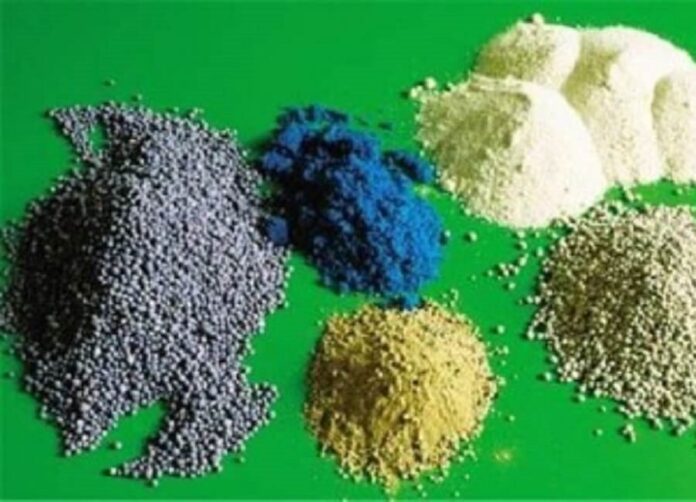Fertilizers add to plants the needed plant nutrients for them to grow healthy and better. They come in two groups. The organic and synthetic fertilizers. This time we shall be talking about the various types of inorganic fertilizers.
Before you go on, understand this in simple terms. Choose the wrong type of fertilizer and you destroy your farm. And that is only in the short term. In the long term, your soil will suffer. You may need to spend extra money correct it.
Now, let us go on the main types.
Read more about Inorganic Fertilizer: Advantages and Disadvantages
1. Complete and Balanced Inorganic/synthetic fertilizers
Inorganic fertilizers come in single-nutrient or multi-nutrient formulas. Multinutrient formulas include complete and balanced fertilizers. These contain basic nutrients, such as nitrogen, phosphorus and potassium. They may also contain secondary and micronutrients such as calcium, magnesium, boron and manganese.
On the package of the fertilizers are three numbers. The numbers indicate the percentage of nitrogen, phosphorus and potassium they contain. For example, NPK 5-10-5 contains 5% nitrogen, 10% phosphorus and 5% potassium. Balanced fertilizers are those that contain equal nutrient amounts, such as NPK 10-10-10.
2. Slow-Release and Specially Formulated
Other types of inorganic or synthetic fertilizers include slow-release formulas. These formulas contain larger molecules that are coated. They are made to break down slowly in the soil. A typical slow-release fertilizer releases nutrients over a period of 50 days to a year. This reduces the chance of burning the plant or root system.
Specially formulated synthetic fertilizers are for a specific type of plants. These special formulas include plant foods for cocoa, azaleas, rhododendron or roses. Specially formulated fertilizers are usually highly acidic and are used only on the plants for which they are indicated.
Read also: Safety Precautions in Agrochemicals handling and usage
3. Nitrogen Fertilizers
Inorganic nitrogen fertilizers come in many different forms. Ammonium nitrate, potassium nitrate, calcium nitrate and urea. These fertilizers contain high levels of nitrogen. Nitrogen is one of the most vital nutrients for plant growth. However, these inorganic fertilizers tend to increase the pH of the soil when you apply them. They increase the chances of burn and damage to seedlings.
Others pull moisture from the air. This makes it difficult to apply and store.
4. Potassium Fertilizers
Inorganic potassium fertilizers include potassium sulphate and potassium nitrate. Also muriate of potash, also known as potassium chloride. Muriate of potash is the most commonly used potassium fertilizer. In some cases, plants may be sensitive to chloride. If a plant is sensitive to chloride, potassium sulphate, also known as sulphate of potash, is a better choice. It does not contain chloride. Potassium nitrate is easy to apply. This is because it does not pull moisture from the air. But it does slightly increase the pH of the soil upon application.
Read also: 6 Basic Soil Problems and Recommended Solutions in Agriculture
5. Phosphorus Fertilizers
Inorganic phosphorus fertilizers such as rock phosphate stay in the soil years after the first application. Rock phosphate works only in acidic soils. The nutrients do not break down for plants in neutral or alkaline soils.
Superphosphate is another form of phosphorus fertilizer. This does not affect the pH of the soil upon application. Ammonium phosphates also come in water-soluble, granular forms.


